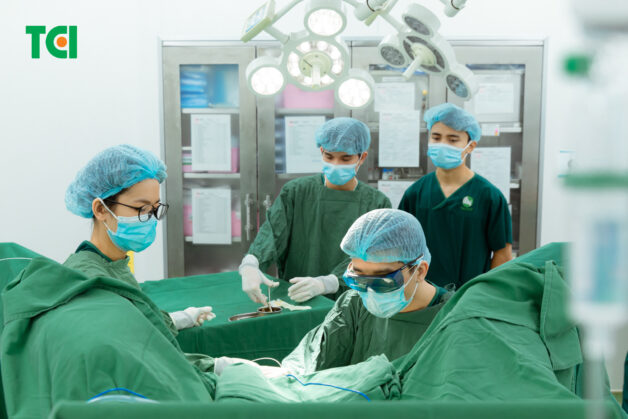Hemorrhoids, an incredibly prevalent ailment nestled within the realm of anorectal disorders, take center stage in this article. Delving into the intricacies of hemorrhoidal affliction, we unravel the phenomenon and impart essential insights for our discerning readers to navigate this discreet nightmare effectively.
1. Deciphering Hemorrhoids:
1.1 Unraveling the Enigma of Hemorrhoids
Hemorrhoids, a source of myriad discomforts, disrupt the tranquility of daily life. The affliction arises from the excessive dilation of anal veins, culminating in the formation of hemorrhoidal clusters. These clusters often induce swelling, itching, constriction, and aching sensations, progressing to severe states such as enlarged, protruding hemorrhoids that impede daily activities, cause vascular congestion, and may lead to tissue necrosis. Two prevailing hypotheses elucidate the genesis of hemorrhoids. Mechanistically, the dilation, injury, or rupture of the supportive cushions holding the anal pad during episodes of heightened rectal pressure precipitates hemorrhoid formation. This phenomenon is often attributed to age-related weakening of the treitz muscle. Alternatively, the vascular theory posits that circulatory irregularities, disrupting blood flow in anal veins, lead to abnormal vascular dilation, forming hemorrhoidal clusters.

Currently, many modern treatment methods help get rid of hemorrhoids easily and gently.
1.2. Hemorrhoidal Manifestation – Classifications and Grading
Hemorrhoids are typically classified as internal or external, differing in location and the characteristics of hemorrhoidal clusters. Internally situated, internal hemorrhoids are challenging to detect visually, residing above the anal verge. Conversely, external hemorrhoids, positioned outside the anal canal below the dentate line, are more perceptible but often inflict greater pain. When an individual experiences a simultaneous occurrence of both internal and external hemorrhoids, it is termed mixed hemorrhoids. Hemorrhoids are further categorized into four progressive grades:
For internal hemorrhoids: Gradual progression from hemorrhoids confined within the anal canal to those prolapsing outside but capable of self-reduction, and finally, those irreducible even with manual assistance.
For external hemorrhoids: Progression from the formation of hemorrhoidal clusters to enlarged, obstructive hemorrhoids causing anal stenosis, and potentially resulting in hemorrhoidal necrosis.
2. Hemorrhoidal Symptoms
Hemorrhoids are characterized primarily by the presence of hemorrhoidal clusters. Whether internal or external, these clusters elicit sensations of itching, constriction, and discomfort when sitting or lying down. Distinctive features include:
Internal Hemorrhoids: Generally less painful but prone to significant rectal bleeding. The bleeding may intensify with the severity of the condition, ranging from a few drops to profuse, streaming blood, potentially leading to anemia.
External Hemorrhoids: Less prone to bleeding but associated with intense pain. Externally positioned clusters are subject to external stimuli, exacerbating discomfort during activities and contact with clothing.

External Hemorrhoids – Less prone to bleeding but associated with intense pain
Overall, hemorrhoids manifest in ways that cause considerable distress, embarrassment, and a diminished quality of life. Though not life-threatening, the impact on daily functions is substantial.
3. Causes of Hemorrhoidal Affliction:
3.1. Constipation – A Pervasive Culprit
Individuals frequently grappling with constipation, (thêm phẩy – mệnh đề rút gọn) face a significantly heightened risk of hemorrhoidal affliction. Straining during bowel movements places considerable pressure on the anal region, potentially causing venous congestion. Poor dietary habits, marked by insufficient fiber intake, exacerbate constipation, contributing to the development of hemorrhoids.

Constipation can lead to hemorrhoid
3.2. Excessive Intra-abdominal Pressure
Frequent and prolonged bouts of coughing, particularly in chronic conditions, can exert substantial pressure on the abdominal cavity. Similarly, professions involving prolonged sitting, such as office jobs, or those requiring heavy lifting contribute to prolonged intra-abdominal pressure, hindering venous return and fostering hemorrhoidal conditions.
3.3. Pregnancy and Postpartum: Vulnerable Phases
The enlarging fetus exerts substantial pressure on various body parts, particularly the mother’s anal region. This pressure impedes circulation in anal veins, creating stasis and fostering hemorrhoidal development. Additionally, the act of giving birth, if not executed correctly during natural childbirth, can exacerbate existing or initiate new hemorrhoidal conditions.
3.4. Miscellaneous Contributors
Anal sex, regular use of stimulants, and the consumption of alcohol-laden substances are additional factors associated with hemorrhoidal affliction. Age plays a role, with the majority of sufferers falling within the 30-60 age bracket, and women accounting for a significant 60% of cases.
In summary, these revelations aim to arm you with invaluable knowledge about the perplexing world of hemorrhoidal affliction. Recognizing that hemorrhoids don’t resolve themselves, timely medical consultation and intervention are crucial. Seek medical attention promptly, even at the slightest indication of hemorrhoidal symptoms, for effective and timely before the disease gets worse.








